What would humanist pornography look like? Chances are that even the most adamant defender of the charms of adult material would struggle to find much evidence of compassion or affection in today’s relentlessly lurid output.
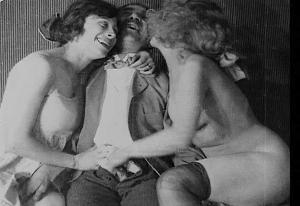 Contemporary pornography informs us of one thing above all else: sex is a type of work, just like any other. What matters most is quantity – the bigger the better. It is not for nothing that one of the most successful sex videos of all time, starring Annabel Chong, features 251 sex acts performed with approximately 70 men during a ten hour period. Contemporary pornography is realistic only in the sense that it sells back to us the very worst of our aspirations: domination, competition, greed and brutality.
Contemporary pornography informs us of one thing above all else: sex is a type of work, just like any other. What matters most is quantity – the bigger the better. It is not for nothing that one of the most successful sex videos of all time, starring Annabel Chong, features 251 sex acts performed with approximately 70 men during a ten hour period. Contemporary pornography is realistic only in the sense that it sells back to us the very worst of our aspirations: domination, competition, greed and brutality.
The pornography industry itself is a veritable juggernaut, generating an estimated $57 billion in annual revenue worldwide. It makes more money than Hollywood and all major league sports put together. 300,000 internet sites are currently devoted to its propagation, and 200 new films are estimated to be made every week. Almost any genre and type of sexual taste is catered for, just so long as you aren’t looking for anything as recherché as sweetness or wit.
On one level, we might say, so what? Pornography serves a certain practical purpose, why expect anything more from it? If you want romance, go and read Mills and Boon! Alternatively, we might side with anti-pornography feminists and argue that the genre is so irredeemably associated with violence and misogyny that we should steer well clear of it, and perhaps even campaign for its abolition.
But what if there was another history of porn, one that was filled less with pneumatic shaven bodies pummelling each other into submission than with sweetness, silliness and bodies that didn’t always function and purr like a well-oiled machine? The origins of cinematic pornography tell a very different story about the representation of sex, one that suggests a way out of both the rubberised inhumanity of today’s hardcore obsession and the claim that pornography is inherently exploitative. What if porn stopped being such a brute and actually started to deal with the question of pleasure?
A recent collection of silent pornographic films, mostly made in France between 1905 and 1930 and collected by French director Michael Reilhac as The Good Old Naughty Days, astonishes and appeals for several reasons. The first thing you notice is the sheer level of silliness on show: sex isn’t just a succession of grim orgasms and the parading of physical prowess, but something closer to slapstick and vaudeville. Men pretend to be statues of fauns for curious women to tickle; two seamstresses fall into a fit of giggles as their over-excited boss falls off the bed; a bawdy waitress serves a series of sexually-inspired meals to a man dressed as a musketeer before joining him for “dessert”.
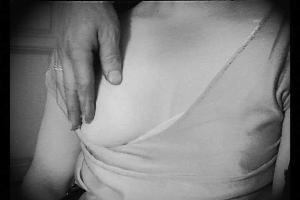 This kind of theatrical role-play pre-empts many of the clichés of contemporary pornography, of course: nuns, school mistresses, the “peeping tom” motif, and so on. But the beauty of these early short films lies in the details, the laughter of its participants and the sheer variety of the bodies on parade: the unconventionally attractive mingle with the genuinely pretty; large posteriors squish overjoyed little men. The fact that the rules of pornographic film-making haven’t yet been formally established, as well as the rudimentary nature of the film equipment, means that often the filming cuts off before any sort of climax, which only adds to the amateurish, unstructured, anarchic charm of it all.
This kind of theatrical role-play pre-empts many of the clichés of contemporary pornography, of course: nuns, school mistresses, the “peeping tom” motif, and so on. But the beauty of these early short films lies in the details, the laughter of its participants and the sheer variety of the bodies on parade: the unconventionally attractive mingle with the genuinely pretty; large posteriors squish overjoyed little men. The fact that the rules of pornographic film-making haven’t yet been formally established, as well as the rudimentary nature of the film equipment, means that often the filming cuts off before any sort of climax, which only adds to the amateurish, unstructured, anarchic charm of it all.
Due to the lack of money available, many of the vintage porn films were made using the costumes and sets of mainstream films, forming a kind of counter-history of cinema within cinema. The attitude towards sex in these early pornographic efforts is closer to the mordant humour of a Samuel Beckett than the action-film over-kill of Suck It Dry 3 and its ilk. As the narrator of Malone Dies recounts: “And though both were completely impotent they finally succeeded, summoning to their aid all the resources of the skin, the mucus and the imagination, in striking from their dry and feeble clips a kind of sombre gratification.” Try asking for that in your local sex shop.
Don’t imagine, though, that all that vintage porn presents is the odd dirty kiss or flash of thigh. In fact, some of the footage of The Good Old Naughty Days is so explicit that it received a R18 rating (a classification for films deemed even more explicit than those that would usually fall under the 18 category). Usually such films are consigned to the DVD racks of sex shops rather than screened in cinemas. The Good Old Naughty Days was briefly released, however, as it was deemed to be “of historical interest”. The implication perhaps being that no one these days could find black-and-white footage of sex arousing.
What shocks the contemporary audience more than any of the specific acts on display, however, is the fact that the participants genuinely seem to be enjoying themselves, and that they might even be quite keen on sleeping with each other.
For all the shouting and screaming of contemporary porn, it’s rare to see a woman smile, or laugh: vintage pornography abounds in sweet expressions and moments of shared affection. The polymorphous perversity of the actors reminds us that sex can be witty, but also that it’s not a competition – many of the short films from the early 20th century involve the inability of men to achieve erection and the increasingly comical attempts of their remarkably understanding lovers to try to amend the situation. The humanist promise of early cinema seems to have been betrayed by a combination of artificial and destructive antagonisms between men and women and unnecessary anxieties about “performance” and desirability.
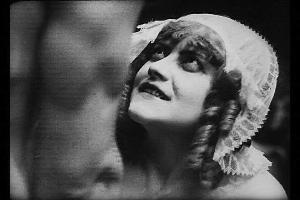 But perhaps we are witnessing a resurgence of interest in re-establishing the link between wit and sex. The Burlesque revival of the past few years, which combines elaborate costumes, glamour, slapstick, striptease and a heavy dose of comedy, reveals a modern desire for subtle titillation. Mainstream cinema too seems to be blurring the boundaries between pornography and romance with films like Michael Winterbottom’s 9 Songs and Lars von Trier’s The Idiots.
But perhaps we are witnessing a resurgence of interest in re-establishing the link between wit and sex. The Burlesque revival of the past few years, which combines elaborate costumes, glamour, slapstick, striptease and a heavy dose of comedy, reveals a modern desire for subtle titillation. Mainstream cinema too seems to be blurring the boundaries between pornography and romance with films like Michael Winterbottom’s 9 Songs and Lars von Trier’s The Idiots.
Unsimulated sex in otherwise non-pornographic films doesn’t always make for a necessarily interesting cinematic experience, as the almost universally bad reviews for Winterbottom’s effort indicate. Nevertheless their existence speaks of a desire to refuse to hand sex over to pornography. John Cameron Mitchell’s Shortbus, for example, features a surprising amount of unsimulated gay and straight sex, often framed in a highly amusing way.
One interesting outcome of this novel approach to sex is how incidental it becomes to the main story, despite, or perhaps even because, it is made so central.
It’s as if when we start to admit that sex can be funny, as well as meaningful, it can take its rightful role as one of the many aspects of human behaviour that relate to all the others. One of the single most depressing things about most mainstream porn is the idea that sex is something to be treated separately from other human relations.
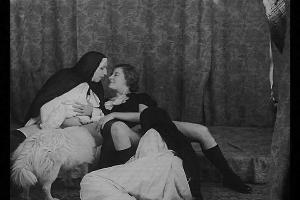 Others argue, less pessimistically, that there are flashes of hope to be found in today’s pornography. Clarissa Smith, author of a forthcoming book, One for the Girls!: The Pleasures and Practices of Reading Women’s Porn, argues that to see all contemporary pornographic output and the response to it as mechanical, repetitive and thematically limited is to neglect the different roles it can play in people’s lives. “Critics often accuse porn of being just the same thing over and over again but that tells us so little about the ways in which porn fits into people’s lives and this is really because as well as thinking that the content is all the same, those critics also see use as being one-dimensional, limited to masturbation.” She also draws an important distinction between access to pornography in the UK and the US. Certain restrictions in the UK porn market give it a different, potentially more interesting, cultural status.
Others argue, less pessimistically, that there are flashes of hope to be found in today’s pornography. Clarissa Smith, author of a forthcoming book, One for the Girls!: The Pleasures and Practices of Reading Women’s Porn, argues that to see all contemporary pornographic output and the response to it as mechanical, repetitive and thematically limited is to neglect the different roles it can play in people’s lives. “Critics often accuse porn of being just the same thing over and over again but that tells us so little about the ways in which porn fits into people’s lives and this is really because as well as thinking that the content is all the same, those critics also see use as being one-dimensional, limited to masturbation.” She also draws an important distinction between access to pornography in the UK and the US. Certain restrictions in the UK porn market give it a different, potentially more interesting, cultural status.
“The main difference lies in the protection of porn as free speech in the US. We have no such protection here so sexually explicit materials are always potentially subject to regulation. Until recently it was difficult to find a legally available magazine featuring explicit shots of penetration in the UK.” This has lead to a specifically British feel to porn. “I think there are elements of UK porn which sell themselves on their Britishness – Readers Wives would be an example and the work of director Anna Span (Britain’s leading female porn director), where a more realist aesthetic is at work in their imagery.”
We might like to think that the British attitude towards sex and its cinematic portrayal has often been tempered with humour, from the sex-farce films of the 1970s (the Confession of series) to the little “thought of the day” speech-bubble of the Sun’s Page 3 girl. But for all this, it remains difficult to find material that balances amusement with excitement. Hardest of all, perhaps, is the notoriously problematic depiction of female pleasure. As Clarissa Smith puts it, “part of our understanding of the notorious difficulty of female pleasure revolves around the authenticity of the performance – is she really enjoying this?” In effect, she argues, it might be easier to conjure up female pleasure via the written word (which, incidentally, touches on the original meaning of “pornography”, as “the writing of prostitutes”). She continues, “I think you can communicate the emotional heat of sexual pleasure and that’s why porn stories work. Its also possible to show women orgasming on film but whether or not it’s believed is another matter. This question brings up another: ‘What is pleasure?’”
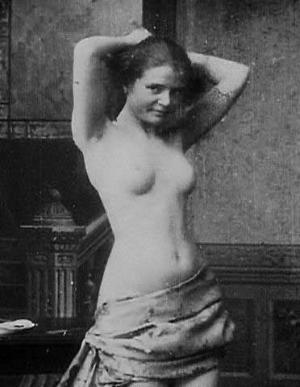 Whilst this last question might be extremely difficult or even impossible to answer, Smith points to the paucity of any real discussion of the subject at the heart of mainstream pornography.
Whilst this last question might be extremely difficult or even impossible to answer, Smith points to the paucity of any real discussion of the subject at the heart of mainstream pornography.
Furthermore, she asks, “Can we depict male pleasure? Yes, the money shot, but is that all pleasure is?” It is hard not to conclude that mainstream porn tends to give both men and women a raw deal. We may, Smith argues, need to ditch films for literature. Smith claims that lesbian erotica is often prefaced by a discussion of the ways in which women’s sexuality has been silenced and rendered secondary to male sexuality in such a way that the writing and reading of lesbian porn has a certain status as an antidote to that: “Thus reading porn can be justified as a political statement or as part of the project of the self-seeking knowledge about one’s own sexual preferences.”
Jane Czyzselska, editor of DIVA and lesbian love columnist for thelondonpaper, agrees that it is hard to imagine how female pleasure might be depicted outside the centuries-old male perspective on desire. “There are codes we learn about desire from very early on in our lives and as we grow from little girls to mature women in a still largely patriarchal culture, what we can ascribe to female expressions of desire becomes less and less clear.”
A humanist pornography sets itself a difficult task if it attempts to capture both male and female pleasure in an affectionate and honest way; an even harder one if it treats sex as part of a more convincing narrative, rather than the outcome of a deliberately limited set-up (“Oh, my washing machine has broken! Best call that sexy plumber”). Nevertheless, by looking back to the origins of pornography in The Good Old Naughty Days and other collections, we can start to imagine anew what a genuinely funny, sweet and exciting pornography would look like: less howling, more giggling. ■
All stills collected in the film The Good Old Naughty Days, dir Michel Reilhac, 2003. One For the Girls by Clarissa Smith is out now from Intellect Books.

